Agile marketing is one of the hottest trends in the industry but it’s also one of the most misunderstood and poorly implemented. Utilised properly, agile marketing allows you to respond to marketing trends quickly, identify new opportunities and capitalise on them before everyone else is doing the same thing.
Unfortunately, the term “agile marketing” itself has become a buzzword in the marketing industry, which results in a lot of misinformation and misconceptions.
In this guide, we run through everything you need to know about agile marketing, how to decide whether it’s for your business and how to implement it successfully.
What are we looking at in this guide?
As this is the ultimate guide to agile marketing, we’re going to be delving into a fair amount of detail in this article. So let’s start by looking at the key points we’ll be covering to give you an idea of what’s ahead.
There are nine sections in this guide, each designed to give you a stronger understanding of what agile marketing really means for your business and how to implement it:
- What is agile marketing?
- The 7 characteristics of agile marketing
- The pros & cons of agile marketing
- Agile marketing misconceptions
- How to build and manage agile marketing teams
- How to manage agile marketing projects
- How to build your agile marketing tech stack
As there are so many misconceptions about agile marketing, it’s important that we start with the basics. First, we define agile marketing and look at its key characteristics before comparing the pros and cons you need to be aware of.
Then, we look at some of the most common misconceptions about agile marketing to get rid of any wrong ideas you may have picked up elsewhere.
Once we’ve got the basics covered, we can explain the key agile marketing concepts you need to know before we show you how to implement agile marketing across its three most important pillars: your agile team, project management and your agile tech stack.
Finally, we’ll ask whether agile marketing is right for your business and lay out the key considerations to help you answer this for yourself.
What is agile marketing?
Agile marketing is tricky to define in a single sentence and this is partly why there are so many misconceptions about it. Part of this complexity is due to the fact that agile marketing isn’t a single principle in itself but rather a set of principles applied to marketing processes.
In this situation, I like to hand-pick some of the best definitions from trusted sources and explain why these explanations are valid.
“Agile, in the marketing context, means using data and analytics to continuously source promising opportunities or solutions to problems in real time, deploying tests quickly, evaluating the results, and rapidly iterating. At scale, a high-functioning agile marketing organization can run hundreds of campaigns simultaneously and multiple new ideas every week.”
Agile marketing: A step-by-step guide; McKinsey
First up, we’ve got the above definition from McKinsey’s own guide to agile marketing. I like this definition because it correctly credits data and analytics as the key component and also states some of the key benefits: fast deployment, rapid iteration, running many campaigns simultaneously and testing new ideas every week.
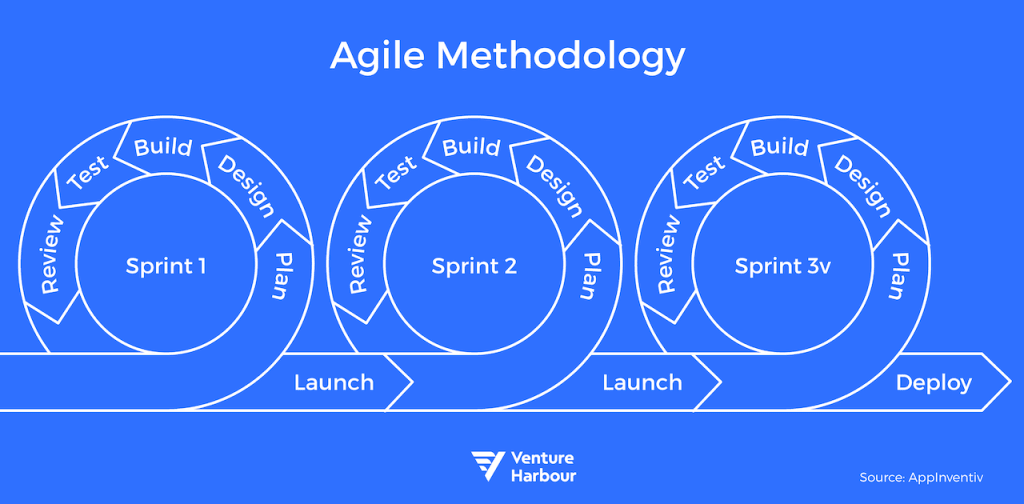
Agile marketing is not a strategy; it’s an approach to marketing processes that informs and guides your strategies through data-driven insights and constant learning.
Next, we have an explanation from CoSchedule, which refers to the roots of agile marketing in software development:
“It’s a project management framework that borrows the principles of agile software development (which enables teams to hit ship dates under budget more consistently) and applies it to a marketing context. It achieves this by streamlining team structure, communication, processes, and workflows to maximize efficiency without sacrificing quality.”
How to Get Started With Agile Marketing and Do Your Best Work, CoSchedule
As CoSchedule explains, agile marketing takes concepts from agile software development and applies/adapts them to marketing processes.
The same article goes to say that “this results in doing better work more quickly with fewer missed deadlines,” adding that “it also allows teams to respond to changes in the market and adjust tactics according to what works much more rapidly than the typical annual ‘big campaign’ advertising model.”
It’s worth understanding this history because it helps define agile marketing correctly but also avoid some of the common misconceptions and how certain agile development principles have to be adapted for marketing purposes.
Jim Ewel was one of the earliest and most passionate advocates for agile marketing in the early 2000s. He defined his Agile Marketing Manifesto by adapting the key principles of agile development and previous suggestions from programmer and entrepreneur, Scott Brinker.
Here are the key principles Ewel sets out:
- Individuals & interactions over processes and tools
- Responding to change over following a plan
- Intimate customer tribes over impersonal mass markets
- Testing & data over opinions and conventions
- Numerous small experiments over a few large bets
- Engagement & transparency over official posturing
- Getting out of the building over formal market research
- Transparency & trust over official posturing
- Continuous improvement & engagement over big launch cycles
- Measurement & accountability over opinions and justifications
Broadly speaking, these are a good summary of the key principles in agile marketing but there are some specifics I’m not so keen on – such as the suggestion that agile marketing doesn’t or can’t follow a plan.
Regardless, Jim Ewel’s manifesto illustrates that agile marketing is a set of principles and it also raises the point that you have to decide what some of these principles mean for your business.
The 7 characteristics of agile marketing
The principles defined in Jim Ewel’s Agile Marketing Manifesto describe the key characteristics of agile marketing quite nicely but they are a little data by now and a few of them are a tad rigid for the modern definition of agile.
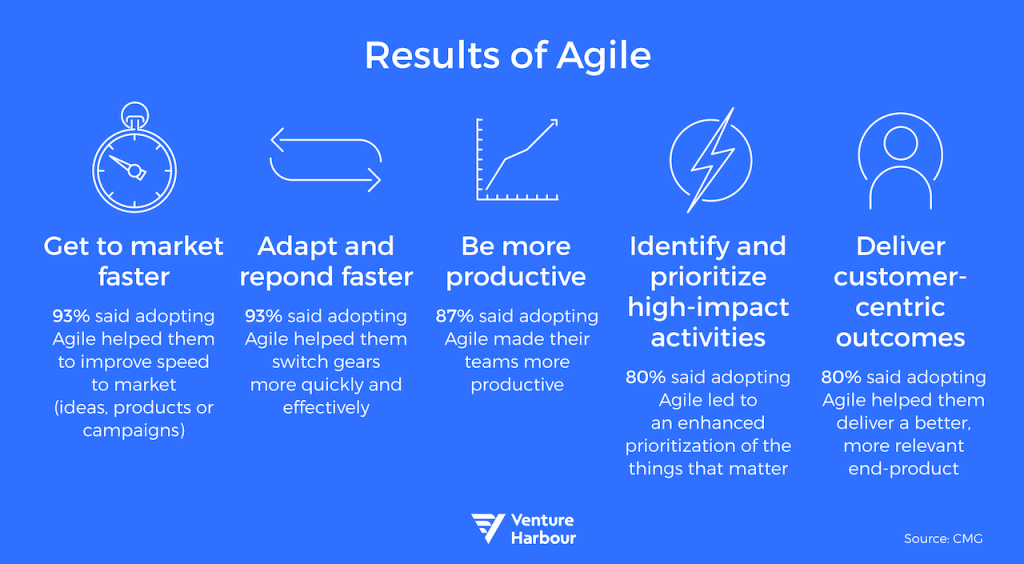
So let’s take a look at the nine key characteristics of agile marketing – most of which are closely related to Ewel’s manifesto with a few w tweaks and updates for agile marketing in 2021.
#1: Adaptability
The most prominent characteristic of agile marketing is adaptability where teams are able to respond to new opportunities, trends and disruptions. The aim is to identify opportunities and seize them ahead of your rivals, predict which trends are worth responding to and devise plans for disruptions that could otherwise damage your business.
At the campaign level, adaptability is an ongoing process of measurement and experiment to find what works, what doesn’t and test new ideas, often with hundreds or thousands of campaigns running at any one time.
#2: Responsiveness
Closely related to adaptability is the agile characteristic of responsiveness and this is defined by the speed and success of your responses to new developments.
Responsiveness is a fine balance between collecting enough relevant data to inform key decisions and implementing changes quickly enough.
#3: Teamwork
Teamwork is a fundamental characteristic of agile marketing teams with a heavy emphasis on digital collaboration to maximise efficiency and allow teams to work effectively across multiple locations.
Technology plays a key role in agile teamwork and a large portion of your tech stack will include software tools to help team members work better together.
#4: Productivity
A constant goal of agile marketing teams is to maximise productivity, enabling them to react faster, achieve goals sooner and waste less time on redundant tasks.
This is another where technology plays a key role and there are plenty of team productivity tools designed to help your team achieve more in a shorter time frame.
Automation is perhaps the most important technology of all when it comes to maximising productivity. However, you also need to adopt the right mindset to identify opportunities where tasks can or should be automated in order to increase efficiency or free up more time for creative tasks that can’t be handled by machines.
#5: Experimentation
Another key principle in agile marketing is ongoing experimentation to test new ideas, verify hypotheses and bust misconceptions. Conversion optimisation and A/B testing are important parts of this but experimentation in agile marketing is much bigger than CRO.
You’re also experimenting with campaign ideas, testing different channels, trying out new tools and optimising your marketing processes to cut out inefficiencies and hit your targets faster.
#6: Data-driven
Everything is agile marketing is data-driven – everything. Key marketing decisions should always be informed, measured and verified by data, never opinion, assumption or gut feeling.
Yes, there’s room for creativity when it comes to campaign ideas, solutions and innovation but every idea is measured to determine its success or failure – and opportunities for improvement.
#7: Constant improvement
Ongoing, data-driven experimentation allows you to achieve a state of constant improvement where campaign performance and marketing processes continue to improve over time.
For example, your historical campaign experimentation data guides decisions for future campaign ideas by providing a blueprint for what works and what doesn’t, resulting in a higher success rate for new campaigns.
Likewise, refining your marketing processes by identifying deployment barriers helps you streamline the journey between creative concepts and live campaigns, allowing your team to deploy, track and optimise new campaigns within a shorter time frame.
The pros & cons of agile marketing
Agile marketing gets a lot of positive press and it’s easy to get the impression that this is the new model for digital marketing that every business should adopt.
Like anything, though, there are pros and cons to agile marketing and it’s important to understand these before you try to overhaul your existing setup.
The pros of agile marketing
Let’s start with the pros of agile marketing, most of which are well publicised by now:
- Agile marketing is growth-oriented and, done properly, it will help you make the most of every chance to maximise growth.
- Agility means you’re able to respond to events – both good and bad – quickly.
- You can identify opportunities and seize them while your non-agile rivals are locked into fixed processes.
- You can also respond to market disruptions and survive difficult times by adapting.
- Agile marketing decisions are informed by data-driven insights rather than opinions, hunches or best practices.
- You learn from success and failures to inform smarter decisions in the future.
- Agile marketing will make you more productive and help you fix inefficiencies in your processes.
- Agile marketing enables you to hit short-term goals as well as the longer-term objectives of traditional marketing.
- Short-term flexibility makes it easier to align marketing with sales.
Essentially, agile marketing is designed for modern companies that need to respond to market changes, new trends, customer demands and disruption quickly – all increasing priorities for brands in the digital, data-driven age.
This marketing principle evolved from agile software development and, for a while, it was most beneficial to the same software companies that needed equally agile marketing processes. Software and SaaS companies also tend to have access to all of the data required to make agile marketing work but, now, this level of data is available to businesses of all sizes, in every industry.
So agile marketing isn’t only for SaaS companies and startups anymore. Data access makes it possible for almost any business that can gain from the benefits listed above but it’s also important to understand the drawbacks.
The cons of agile marketing
With no shortage of positive talk about agile marketing, it’s probably more important to understand the negatives than the positives. For some businesses, agile marketing simply isn’t viable but, more commonly, understanding these negatives will help you build more effective agile marketing processes to mitigate or overcome them.
- Agile marketing is misunderstood which leads to many companies implementing it incorrectly.
- Agile marketing requires top-to-bottom change which is difficult for some businesses to deal with.
- Long-term goals can suffer due to the emphasis on short-term targets in agile marketing.
- Fragmented output makes it harder to maintain quality and consistency across large or long-term tasks/projects.
- Talent acquisition can be tricky and you’re going to need a relatively large team (outsourcing is crucial for smaller teams).
- Agile sprints may lead to burnout so you have to plan breaks and recoveries strategically.
- Tech and data overload is a potential problem if you choose the wrong tools or have poor data processes in place.
In truth, agile marketing can be tricky to implement for businesses that are used to doing things more traditionally – especially for larger, older companies that have invested a lot of time, money and personnel into those traditional processes and systems.
Likewise, very small businesses may not have the personnel, funds or data required to go truly agile – and the returns may not even be worth it.
However, for the growing majority of businesses that are determined to thrive through growth, agile marketing provides the flexible framework to capitalise on every growth opportunity – and you can overcome these potential drawbacks.
Agile marketing misconceptions
With a firm grasp of the pros and cons of agile marketing, all that’s left now is to dispel some common misconceptions that can lead to false hopes, concerns or wrong ideas about how to implement it.
So here goes.
Misconception #1: Agile marketing is just the latest trend
There is some truth to this, in fairness, but agile marketing isn’t simply the latest disposable trend that’s going to be replaced by something new and shiny next year.
Agile marketing will continue to evolve but this concept is here to stay because the core principles behind it are necessary in today’s data-driven, fast-changing world.
What doesn’t help is the way a lot of marketers talk about agile marketing (or trends in general) like it’s some kind of holy gift handed down by the marketing gods that’s going to answer all of our prayers.
In reality, agile marketing is the adaptation of principles that drive modern software development and reshaped for marketing teams facing similar challenges. For some time, this mostly applied to software companies, SaaS brands and startups but the same challenges are now shared by almost any businesses looking to achieve rapid growth.
Misconception #2: Agile marketing is all about speed
Speed is a key concept in agile marketing but it’s never the main priority. It’s no good launching a new campaign in record time if it falls flat on its face because you cut a bunch of corners.
In agile marketing, speed is all about hitting your targets as soon as possible but you still have to actually hit them. Your aim is to find that balance of effectiveness where you’re completing objectives as quickly as possible and achieving rapid, continuous progress.
Every sprint is a dash to the finish line but, collectively, these sprints are part of a much bigger objective. Imagine the Olympics where the Sprints are the individual events and your team is the athletes who compete for medals while your company is the nation you represent and the overall medal tally is what matters most when the event is over.
Misconception #3: Agile marketing is all about change
Given the adaptive, responsive nature of agile marketing, it’s easy to think that constant change is a key characteristic. To some extent, this may be true but, if change is the standout word when you describe the purpose of your agile marketing approach, you’re doing it wrong.
Change is a common by-product of agile marketing but these changes are part of the drive towards continuous improvement – and this means changing what doesn’t work and continuing to do what does.
In theory, as your marketing processes mature and your data insights become more reliable, the amount of change taking place within your agile marketing system should gradually decrease with your historical data guiding key decisions.
Change is never the objective but agile marketing should equip you with the tools and processes to change what and when it’s required.
Misconception #4: Agile marketing doesn’t support long-term strategies
This is perhaps the most frustrating misconception about agile marketing but it’s also one of the most common problems companies run into. If you’re not disciplined, agile marketing can take your attention away from long-term objectives but it’s our responsibility, as marketers, to be able to work towards long and short-term goals.
Take SEO as an example, which is widely regarded as a long-term marketing strategy – and for good reason.
You target keywords and gradually build a search presence that’s designed to last but there are also short-term goals you can work on, too. Taking the agile marketing approach will help you identify new keyword opportunities, as they emerge, identify changes in consumer trends and even predict market shifts before they happen.
Why not run SEO and content marketing campaigns to publish a bunch of content for topics and keywords projected to increase in popularity over the next 12 months and build your presence before everyone else is fighting for the same spots?
This doesn’t mean you ditch your long-term SEO goals for top-level keywords.
You maintain your long-term strategies and integrate agile approaches to help you achieve short-term objectives to create a more comprehensive search strategy – and the same is true for agile marketing in general.
Misconception #5: Agile marketing sacrifices consistency
Again, this is a gander if you focus all of your efforts into short-term goals but nobody is forcing you to do this. Consistency is a challenge for businesses, regardless of whether they take the agile marketing approach, and you have to put processes in place to maintain the same level of quality, voice, brand image, etc.
For example, if a consistent tone is important in your content marketing strategy, you have to create style guides, hire editors and use software tools to automate repetitive functions – none of which is unique to agile marketing.
Likewise, if you want customers to receive consistent quality via support channels, you have to invest in training, documentation, infrastructure and the tools necessary to deliver the same level of service to every customer.
Yes, consistency can be a challenge with agile marketing but this is true for any kind of business process carried out at scale.
How to build & manage your agile marketing team
Agile marketing is a team effort and it doesn’t matter how good your agile processes are, in theory, unless you’ve got the right personnel on board. In this section, we look at how you can build an agile marketing team that meets your business’ needs.
Structuring your agile marketing team
There’s no single agile marketing team structure that works for every business and you’ll find all kinds of templates suggesting different variations.
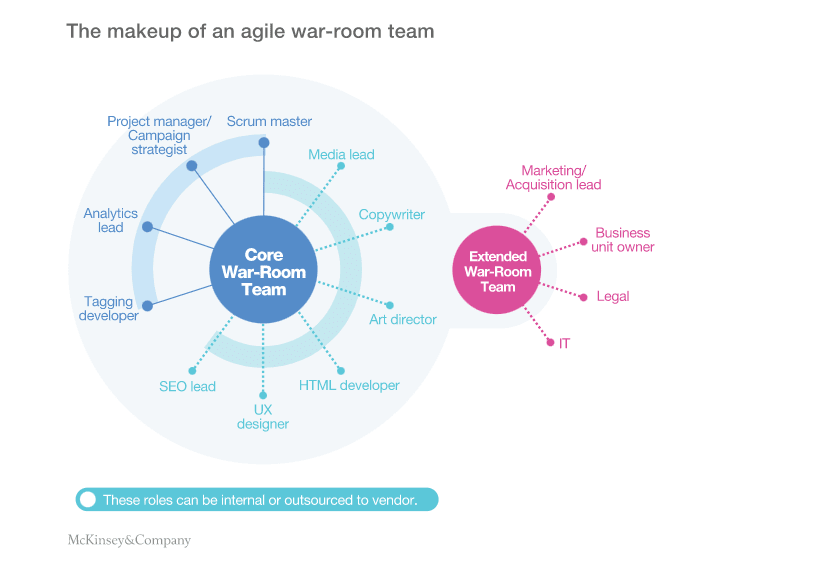
For example, the War-Room Team suggested by McKinsey (above) aims to illustrate a team structure comprised of a Core War-Room Team, which includes a top tier of team leaders and a second tier of professionals for specific marketing activities, which can be in-house or outsourced as needed.
There’s also an Extended War-Room Team of departments/individuals that are outside of the core agile marketing team but still integral to helping it achieve its objectives.
Your own agile marketing team might look very different to this but there are some key concepts to learn from here:
- Creating a tiered system for your agile marketing team
- Building a core team of in-house / permanent talent
- Outsourcing activities to agencies or freelancers
By implementing a tiered system, you can assign roles and accountability more easily. With agile teams adapting so regularly, it’s important that everyone understands their responsibilities and who has the authority to give them new ones.
Build your core team
Much like the McKinsey article suggests, you’re going to want to build a core team of quality talent – contracted employees who work in-house or, at least, on a permanent basis, even if they’re working from home.
As a rough guide, your core team should include team members that are any of the following:
- Top-level marketing talent
- Individuals you would struggle to replace
- Full-time team members
This should include your top-level team members: the decision makers, strategists and team managers. These are full-time positions where you want to recruit and retain top talent rather than constantly switching personnel.
Your core team may also include professionals for specific marketing roles, such as technical SEOs, landing page designers and content marketers – if they play a key role in your marketing strategies.
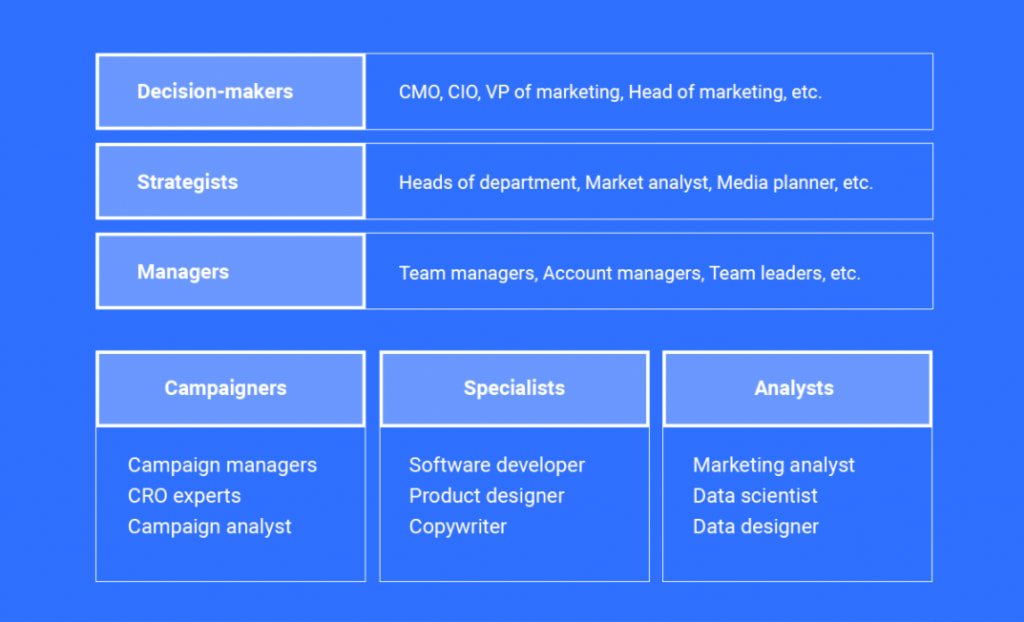
Here at Venture Harbour, our core team has two levels with our marketing leaders in the top tier. In the second tier, we have our key marketing talent – everything from campaign managers and CRO experts to data scientists and analysts.
These are the team members that you always want on your side, no matter what else might change.
Expand your team with talent from outside
With your core team set up, the key to building a truly agile team is to bring talent in from the outside. This can include agencies, freelancers and part-time staff that are important but not indispensable to your team.
The benefit of outsourcing is that you can add talent on-demand and expand or contract your team as necessary.
Let’s say you launch a new campaign with an ambitious customer acquisition target for the next year – one that’s going to require a significantly larger team. Instead of investing large sums in expanding your in-house team, you can strategically choose which talent to bring in from outside on a temporary basis without any long-term risk.

You can also experiment with new strategies and bring in new team members for the trial period.
For example, let’s say your data suggests that creating regular video content will generate more traffic and leads per month. Instead of building a new video marketing team, you can hire freelancers to help you put this theory to the test before you start pumping money into it.
You can always build this video marketing team in the future, if that’s the way to go, but outside talent provides the flexibility you need in the meantime.
How to manage agile marketing projects
Much like building an agile marketing team, there’s no single way you have to approach managing agile marketing projects but there are tried and tested frameworks you can use to get started and adapt to meet your needs.
The two most common frameworks used by agile marketing teams are called Scrum and Kanban.
Agile frameworks: Scrum vs Kanban
Scrum and Kanban are the two most common agile methodologies that have carried over from development into marketing. They both aim to make large projects more manageable by breaking them down into smaller chunks and setting constant, achievable goals to keep your team motivated and hitting targets.
However, the day-to-day workings of these two frameworks are significantly different.
Using the scrum framework for agile marketing
The Scrum framework was originally designed to address some of the unique challenges inherent in software development, such as:
- Teams losing sight of the long-term goals while they’re working on new features, updates or bugs.
- Developers getting bogged down in code-level details.
- The needs of the company changing before long-term goals are even achieved.
The complexity and time frames of software development can make it difficult for engineers and teams to keep sight of the long-term goals.
Likewise, when you’re knee-deep in code, it’s easy to get lost in details when rolling a feature or product out for the sake of progress over perfection makes more business sense.
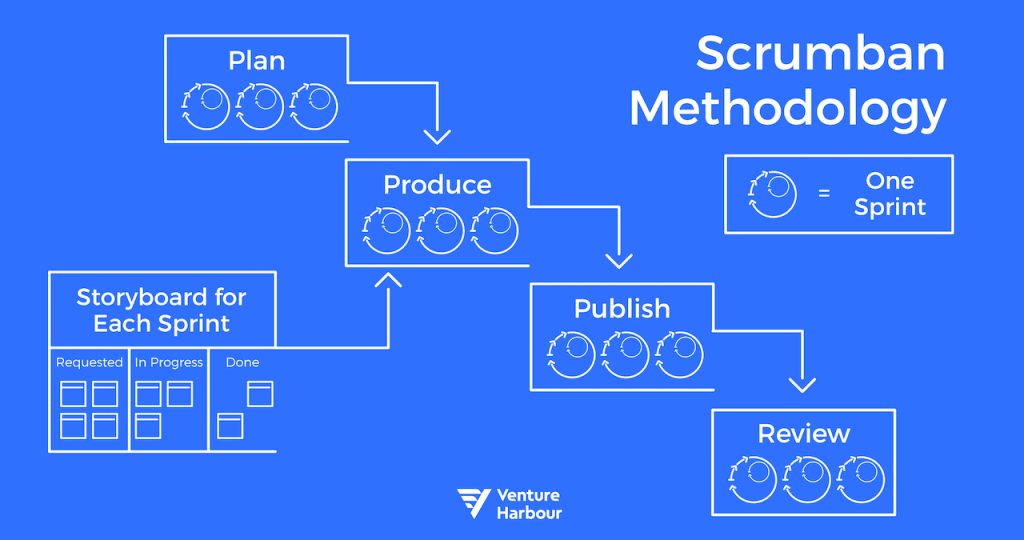
Furthermore, the constant cycle of software updates and re-releases means that, sooner or later, the company’s goals are going to change, while teams are half-way through working on unmet objectives that are no longer relevant.
These same problems exist for modern marketing teams that are constantly working to short and long-term goals, which can change at any moment.
The Scrum framework aims to address these issues by encouraging your teams to regularly check-in to discuss the progress of short-term goals, ensure these actions are still contributing to your long-term goals and confirm that these long-term objectives are still the direction the business wants to take.
This allows marketing teams to adapt to the business’ needs as soon as new opportunities arise or market disruptions call for a change of course. In other words, it ensures that marketing efforts are always working towards the primary goals of the business.
The Scrum framework revolves around four team events:
- Sprint Runs: Short, manageable projects with specific goals, usually running for no longer than 2-3 weeks.
- Daily Scrum (also known as Daily Standup): Short, daily meetings to check in on progress and ensure everything’s moving in the right direction.
- Sprint Review: Team meetings where the result/goal of the sprint run is discussed and reviewed.
- Sprint Retrospective: The final Sprint meeting where the Sprint itself and the working processes are analysed.
As you can see, the key word that keeps popping up here is “Sprint” which refers to the short project cycles agile marketing teams work on when using the Scrum framework.
Sprint Runs in agile marketing
Sprints are power sessions that typically last anywhere between one and six weeks on a project, experiment or task with a defined goal. For example, you could be running a feedback campaign for a new feature on your software product or testing four variations of a landing page for a new product release.
You can break down larger projects into sprints, too. For example, if your design and paid advertising teams are tasked with creating 15 new landing pages for a batch of campaigns, you could split this into five two-week sprints to complete three landing pages, from start to finish.
The important thing is that each Sprint has a clearly defined goal that’s both achievable and measurable.
When the Sprint comes to an end, you’re going to run a Sprint Review where you discuss the result of the Sprint – in other words, the goal that has been achieved (or not) and the quality of this result.
So, if your goal was to create 15 landing pages, the Sprint Review would focus on analysing the quality of these landing pages and discuss whether the objective was too ambitious or not ambitious enough.
The final meeting at the end of a Sprint is the Sprint Retrospective and this is where you analyse the working processes of your Sprint to address any issues that may have gotten in the way of progress – inefficiencies, delays, lack of tools or personnel, etc.
This allows you to improve your agile marketing processes to ensure you have the tools and systems in place to hit your targets.
Daily Scrums in agile marketing
Otherwise known as standup meetings, Daily Scrums (named after the rugby term) are short, daily meetings where agile marketing teams gather to discuss the progress of the current sprint.
Ideally, these meetings should be no longer than 15 minutes long, depending on the size of your team, and each member should explain the following three things:
- What they did yesterday to contribute towards the sprint objective.
- What they plan to do today to contribute to the sprint objective.
- Any barriers standing in their or the team’s way of achieving this objective.
Typically, these meetings run at the start of the day to help team members get their head in the game and motivate each other to hit targets while also giving team managers the chance to monitor progress and address challenges.
Using the Kanban framework for agile marketing
While the Scrum framework is clearly defined and adaptable, the Kanban principle is less structured in terms of team structure and project management.
One benefit of this is that Kanban is adaptable to any marketing team, regardless of size or setup. However, this means you have to define your own structures and processes from scratch – this isn’t necessarily a downside but something you need to be aware of.
More importantly, the Kanban framework prioritises different objectives.
The key objectives of Kanban:
- Visualise the workflow: Using Kanban boards to visually manage projects.
- Limit work in progress: Complete tasks faster, improve efficiency and reduce the percentage of work “in-progress”.
- Manage flow: Kanban prioritises a continuous flow of work rather than structured bursts.
- Increased responsibility: Kanban encourages everyone to adopt a leadership role over their own tasks, increasing responsibility, accountability and credit for successes.
- Improve collaboration: Kanban is collaborative where improving processes for teamwork constantly aims to increase efficiency.
- Constant improvement: Analyse workflows to find opportunities where processes can be improved and barriers removed.
- Reduced multitasking: Increase productivity by focusing on individual tasks and actively taking steps to reduce multitasking and interruptions.,
While Scrum focuses on Sprints of set time-frames, Kanban is less concerned about rigid turnarounds. This doesn’t mean deadlines aren’t important in the Kanban principle but they are perhaps more flexible. For example, strictly speaking, new work should never be added to a Sprint that’s already in progress whereas new work can be added to Kanban tasks, even if this means pushing back the deadline – as long as this is deemed the best overall action to take.
So you can already see how Kanban is more flexible than the traditional Scrum and, technically speaking, this also makes it the more agile of the two frameworks.
Scrum or Kanban: Which is better for agile marketing?
Both the Scrum and Kanban frameworks are proven agile marketing methodologies so it’s not a case of one being better than the other. It all comes down to what your goals are with agile marketing and what kind of setup you’ve got to work with.
Generally speaking, larger teams with clearly defined marketing roles and external departments to think about often find it easier to implement the Scrum framework because it requires clearly defined roles and it sets regular, time-sensitive deadlines/goals that are more in-line with traditional business setups.
If you or your team are regularly reporting to senior management, the Scrum framework makes it easier to demonstrate progress through consistently structured reports that are easily analysed.
You’ll also find the Scrum framework is naturally geared towards assigning roles and tasks to specific departments and individuals, which can be easier to work with if you’ve already got this team structure in place.
The Kanban framework can be adapted for these team structures, too, but you have to define where these lines are. This requires some extra work and discipline whereas the Scrum framework already comes with this structure in place.
The downside is that the Scrum methodology can be too restrictive for smaller or more agile teams. It’s no coincidence that the Kanban framework is popular with startups and newer SaaS companies that are agile by nature and need working processes that allow them to fully exploit their agility.
So where a company like IBM is more likely to opt for Scrums, newer or smaller software companies are generally better off starting with Kanban.
This doesn’t mean Scrum is always better for larger teams and Kanban for smaller teams, though. More than anything, Scrum is easier to implement and manage for larger businesses and the same thing applies to Kanban and smaller companies – but convenience isn’t a very good marketing objective.
So think about which is more important to you: Do you want to constantly hit targets and produce work faster (Scrum) or improve your production process over time and maximise agility (Kanban).
Implementing both principles
It’s important to understand the differences between the Scrum and Kanban but you don’t have to choose one over the other. Plenty of agile marketing teams implement both frameworks into their agile processes – for example, adopting the Scrum framework for project management and using Kanban within their Sprints.
While the Scrum framework comes with defined roles and time frames, you can adapt these in any way you want. Maybe Sprints of 2-3 weeks aren’t always long enough and you decide to run some Sprint for up to 6 weeks. That’s absolutely fine and Kanban happens to implement very nicely into longer Sprints.
So take the time to get familiar with both of these frameworks but don’t let anybody tell you that you’ve got to use one or the other.
How to build your agile marketing tech stack
Agile marketing relies on data and automation to inform rapid decisions and cut out unnecessary tasks that prevent you from responding and completing goals quickly enough.
This is why it’s so important that you have the right tech stack in place to manage agile marketing at scale.
What do you need from an agile martech stack?
Agile marketing is all about hitting targets, responding to change and constant improvement. So your software priorities mainly revolve around project management, analytics, automation and collaboration.
Here are some of the key things you need from your agile marketing tech stack:
- Task management: A system for managing your backlog, prioritising tasks, assigning them, updating statuses and marking them off when completed.
- Team management: An intuitive way to manage your agile marketing team collectively, as well as individual team members.
- Project management: A platform for managing projects from start to finish.
- Agile planning: A range of potential tools for planning new campaigns, managing goals, calculating outcomes and prioritising campaign ideas.
- Campaign approval: A system for getting campaigns approved and signed off as quickly as possible to cut out unnecessary deployment delays.
- Campaign measurement: Analytics tools for measuring the performance of campaigns vs your goals.
- Marketing automation: Custom automation to take the manual workload out of campaigns, freeing up time for tasks that have the greatest impact.
- Customer relationship management (CRM): A platform for storing and updating customer data as they progress along the buying process.
- Marketing & sales alignment: Tools that integrate your marketing and sales teams (and strategies) for a seamless transition between the two.
- Collaboration: Tools to help your team members work together with the greatest efficiency.
- Asset management: A platform for managing all of your digital assets while giving access to everyone who needs it.
- Documentation management: Tools to create and manage documentation for your marketing team to follow.
That gives you a good idea of what you’re going to need from your agile marketing tech stack so, now, let’s look at some of the best tools to get you started.
TrueNorth: The all-in-one agile marketing platform
TrueNorth is the all-in-one agile marketing platform that helps you plan, strategise and deploy campaigns faster while also providing tools to predict and measure the performance of campaigns.
Unlike most marketing software tools, TrueNorth’s priority is to take the guesswork out of marketing decisions so you can grow with confidence.
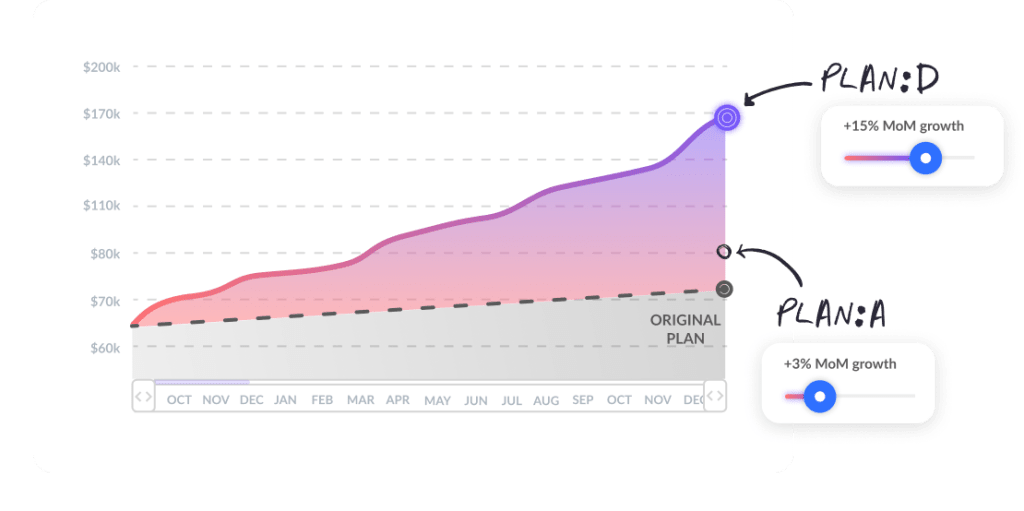
Key features:
- Agile management: Manage your entire agile marketing efforts from one place – no more switching between apps and documents or getting lost in fragmented data.
- Marketing simulation: Simulate campaigns before deployment to predict outcomes, compare results, prioritise campaigns and set budgets more effectively.
- Campaign approval: Get campaigns approved faster to reduce deployment delays, allowing your team to run campaigns at the most effective time and start gaining traction right away.
- Paybooks: Align your team on what works with playbooks; A source of truth of what works in your marketing – from audience personas, to best performing channels and campaigns.
- Agile reporting: TrueNorth provides a built-in reporting system designed specifically for agile marketing that allows you to demonstrate ROI, measure campaign performance, set and allocate budgets more effectively and compare real-world results against your simulations.
- Test & learn: Capture meaningful insights from every campaign and learn valuable lessons for every marketing activity, which you can apply to future campaigns to constantly refine your agile processes.
TrueNorth takes the complexity out of agile marketing management without holding back on features. Too many software tools get in the way with poor usability, bloated feature lists, restrictive pricing and poorly-implemented tools – all of which ends up adding to your workload instead of reducing it.
With TureNorth, you can see how much effort has been put into designing every tool to help you take meaningful actions with every click. This is a platform that doesn’t demand your time or put unnecessary hurdles in your way – a problem many agile marketing tools suffer from.
ActiveCampaign: Powerful automation across marketing & sales
ActiveCampaign is a comprehensive CRM, email marketing and marketing automation platform that cuts out the manual workload across marketing and sales, helping to align both seamlessly.
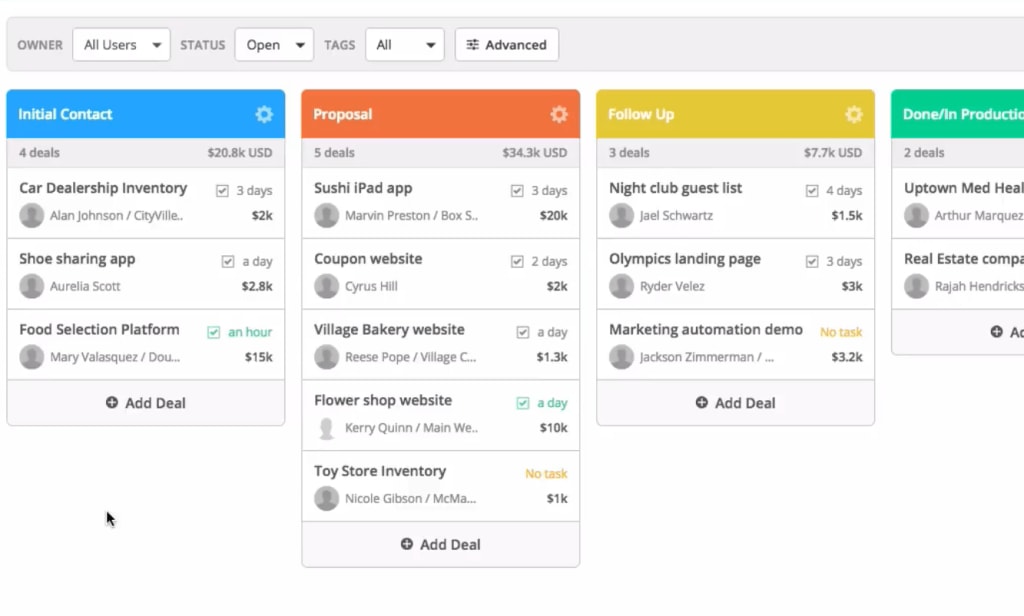
Key features:
- Customer relationship management (CRM): ActiveCampaign’s built-in CRM puts all of your customer data in one place where you can update, manage and use it to target highly-relevant campaigns.
- Marketing automation: Automate your campaigns using pre-made templates or create your own workflows using the drag-and-drop automation builder to bring your own ideas to life.
- Email marketing: Nurture leads into paying customers and maximise customer lifetime value with automated email marketing campaigns.
- Lead management: Track leads across the customer journey, qualify and score leads, target them with relevant campaigns at every key stage of the buying process to maximise purchases.
- Multichannel marketing: Run campaigns across every channel, capture leads and bring them through to your owned channels (website, email, etc.).
- Conversations: Communicate with leads and customers via live chat, email and Facebook Messenger.
That doesn’t even cover a fraction of the features available on ActiveCampaign, which is one of the most comprehensive marketing systems available – and the only one that offers enterprise quality at scalable prices almost any business can afford.
More importantly, when it comes to marketing automation, it’s difficult to find another platform as good at this (let alone better) and we’ve spent the last 5+ years trying to.
Zapier: App linking & small task automation
While ActiveCampaign is the king of marketing automation, smaller everyday tasks can still drag down the productivity of your team – things like manually uploading email attachments to a Google Drive folder or copying and pasting data from one app to another.
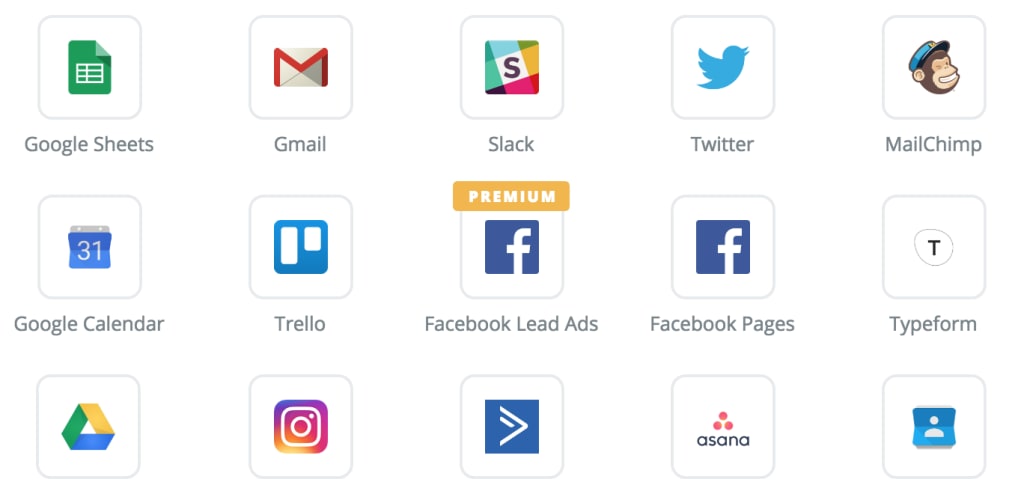
Zapier cuts out these inefficiencies by linking thousands of your favourite apps together, allowing them to exchange data and automate basic tasks.
So, for example, you can set up automatic Slack notifications for every time a new email lands in Gmail matching your chosen keywords. Or you can automatically create new Google Calendar events every time a new card is created in Trello – the possibilities are (almost) endless.
Slack: The agile communication tool
Slack was built by agile developers for agile developers and its success has turned into one of the biggest SaaS success stories ever. The platform’s genius lies in its simplicity and dedication to excellent UX but this isn’t the basic messaging app it looks like when you first start using it.
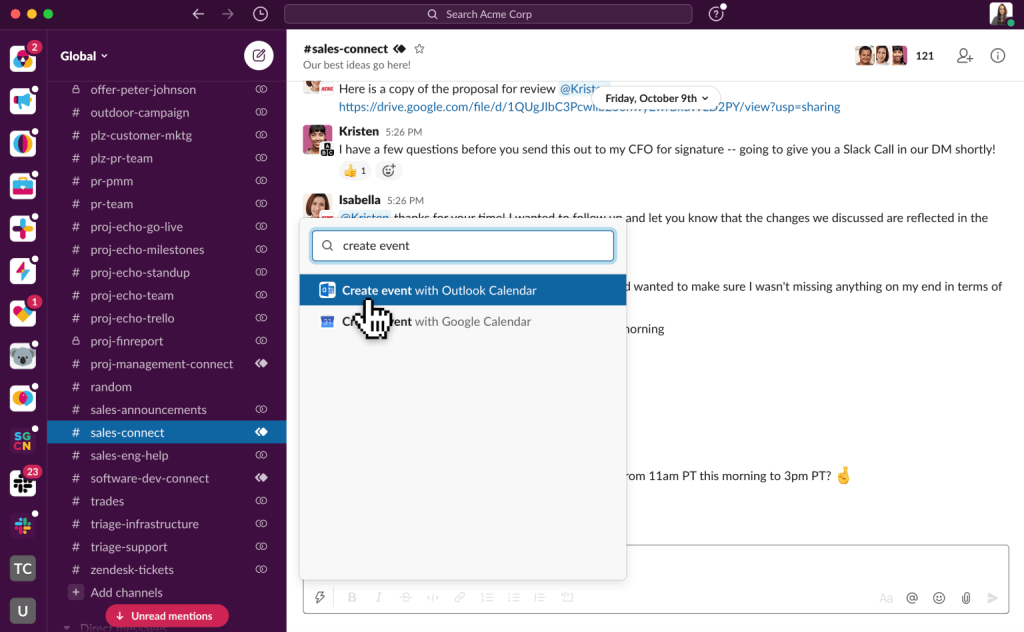
Key features:
- Instant messaging: Live communication between every team member for seamless collaboration.
- Statuses: Users can set availability statuses to focus on individual tasks as needed.
- File sharing: Drag-and-drop file sharing for PDFs, images, videos and other common files types.
- Voice & video calls: Voice and video calls directly from within Slack.
- Screen sharing: Allows team members to show their work to others in real-time for stronger collaboration.
- Slack apps: Unlock a wealth of new features and integrations with Slack app.
There are powerful features lurking under Slack’s simplistic exterior and, arguably, it’s most impressive is the library of Slack apps developed by third-party software providers.
These apps open up a wealth of features and integrations beyond the core Slack offering and we’ve discussed our pick of the 30 Best Slack Apps, Integrations & Bots to Try before.
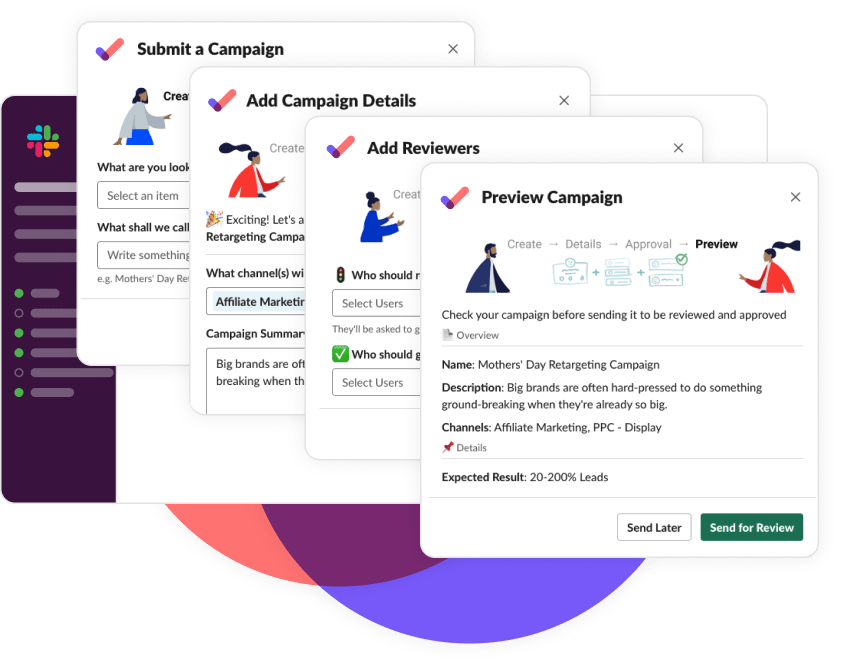
For example, the SignOff app integrates Slack with TrueNorth to help agile marketing teams get campaign ideas approved from within Slack, further cutting down on potential delays and closing the gap between ideas and results.
This is one of the most important processes for agile marketing teams to optimise and remove inefficiencies. With Slack and the SignOff app, you remove even more switching between apps, potential delays with message delivery and manually chasing up approval requests.
Trello
With Kanban being such a crucial principle in agile marketing, it wouldn’t be right to end this article without a mention for at least one of the project management tools built around the Kanban design.

Key features:
- Project management: Trello is a simple, easy-to-use project management app for collaborative teams.
- To-do lists: Create to-do lists, add due dates, assign them to people and manage tasks as they’re completed.
- Trello boards: Dashboards where you can create and manage lists of cards containing tasks and to-do lists.
- Work with anyone: Invite anyone from around the world to help you make things happen.
- Instant messaging: Talk to team members in real-time to discuss tasks.
Trello regularly features in our rankings for best productivity apps and for good reason. If you’re looking for a simple Kanban project management tool, this is as good a place as any to start.
In truth, there are plenty of Kanban tools on the market these days and many of them offer more features than Trello but it all comes down to whether you need these extra features or simply want the Trello boards to manage team projects.
Make agile work for your business
Agile marketing is a modern concept for today’s growth-driven businesses but it’s not always easy to shift from tradition to agile frameworks – especially for older, established companies.
Newer, smaller companies tend to be more agile by nature but there’s a difference between being agile-inclined and being truly agile, which means responding with speed, accuracy and effectiveness.
Simply changing your mind a lot and optimisation for the sake of optimisation is not agile marketing – or, at least, it’s not effective agile marketing.
So follow the steps we’ve outlined in this article, set clear goals for your agile marketing processes and implement systems designed to meet the needs of your team/business.




